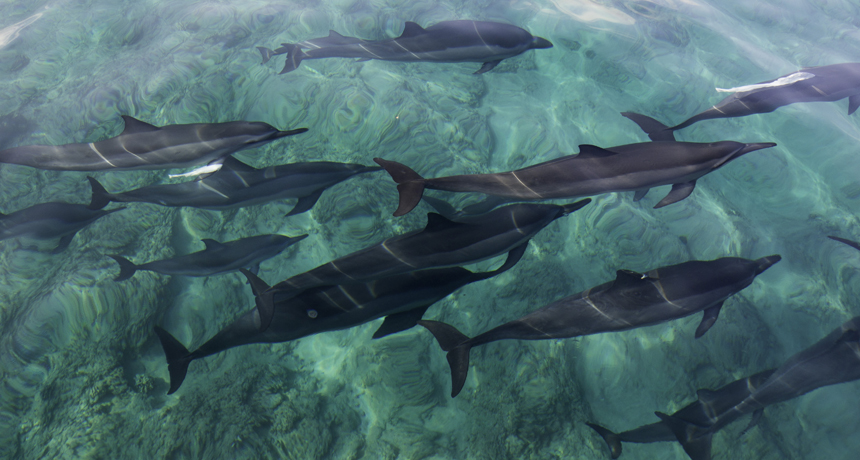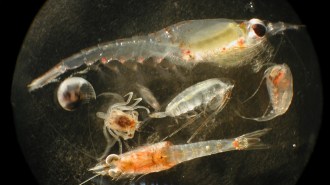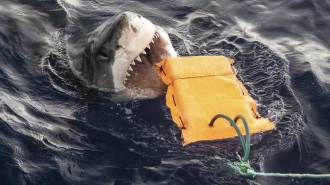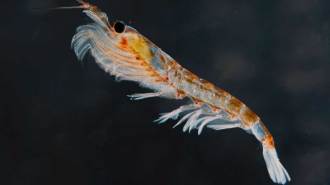Dusk heralds a feeding frenzy in the waters off Oahu

Dolphins in the waters off Oahu have a short window of time after dusk for some of the best feeding opportunities.
fiatlux/Flickr (CC BY-NC-SA 2.0)
- More than 2 years ago
Everything that lives in the ocean has its own set of needs and requirements. Microscopic algae, for example, need to soak up the sun, so they stay within the top layer of water. Zooplankton such as copepods eat those tiny algae, so they have to seek out the phytoplankton. Sometimes those organisms can gather into loose layers. When those layers overlap, that means it’s feeding time.
In the waters off Oahu, though, that period of overlap happens for just a brief period at dusk. And its effects cascade up the food web, even up to dolphins, finds Kelly Benoit-Bird of Oregon State University in Corvallis and Margaret McManus of the University of Hawaii at Manoa. Their study was published May 20 in PLOS ONE.
Over two three-week periods in 2009 and 2010, Benoit-Bird and McManus used moored sensors, ship-based sampling and echo-sounding to determine where the various organisms were living, at what depths and at what times in the waters off the west coast of Oahu.
They found that, on some days, zooplankton layers commonly formed in the afternoon, disappeared just after dusk and then reappeared before midnight. Layers of phytoplankton peaked around dusk and dawn. The two groups overlapped just briefly at dusk. That overlap would let the zooplankton munch on the phytoplankton.
The zooplankton drew micronekton —small creatures, like cephalopods and crustaceans, that swim up from the deep to eat the zooplankton. They don’t get much time, though — the zooplankton disappeared some 20 to 50 minutes after the micronekton showed up, the researchers found.
On days when the zooplankton layer formed, spinner dolphins took advantage of the micronekton that were drawn to the area. The dolphins would split up into smaller groups, and pairs would dive 60 percent deeper to feed on the micronekton. They were able to double their time spent feeding, compared with when there was no zooplankton layer. But they had only a small window of about 30 minutes to take advantage of the increased availability of food.
Spinner dolphins aren’t limited by any scarcity of food but by the amount of time they spend foraging. So that 30-minute window in which they increase their foraging could provide enough of a boost to have an impact on the animals’ fitness, the researchers write.





